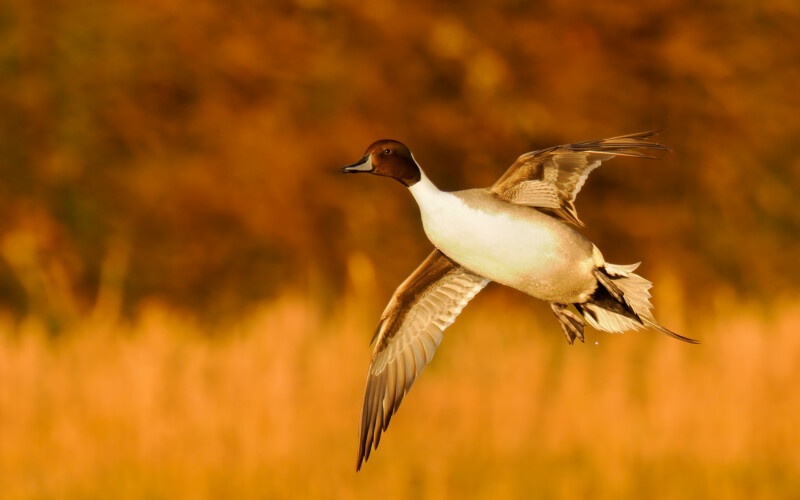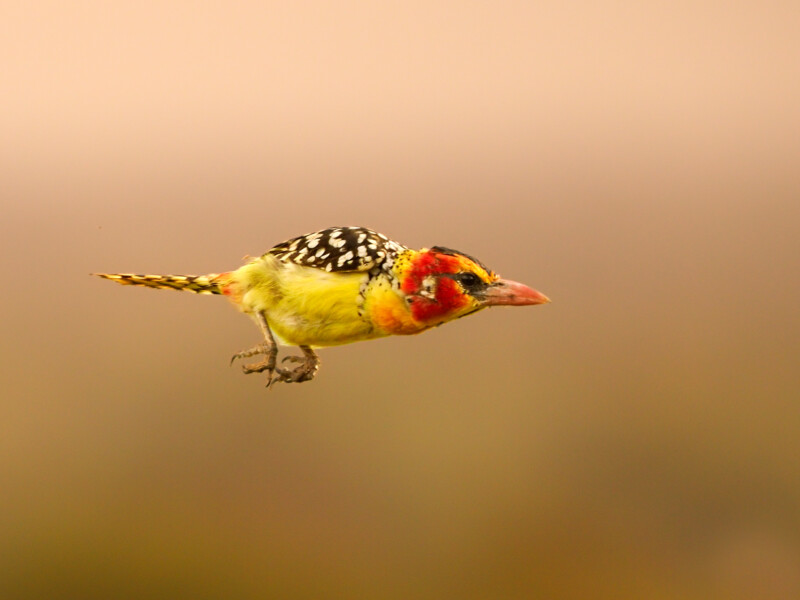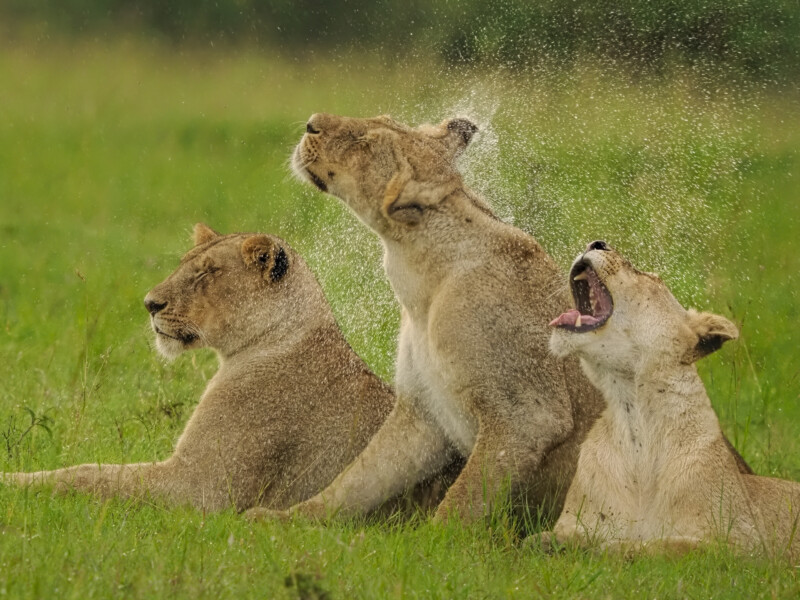On Safari: A Hands-On With the New OM System OM-1 Mark II
![]()
With the announcement of the OM SYSTEM OM-1 Mark II and the M.ZUIKO DIGITAL ED 150-600 F5.0-6.3 IS Lens, wildlife photography has never been more accessible. Professional wildlife photographer Andy Rouse recently used both on a wildlife safari in the Masai Mara, and he shares exclusively with PetaPixel his favorite images and initial impressions of the kit’s wildlife performance.
Full disclosure: This article was brought to you by OM SYSTEM Cameras
At a Glance
With drastically improved autofocus and image stabilization, the OM-1 Mark II is a dream camera for wildlife enthusiasts. However, most lenses that perform well enough to capture incredible telephoto photos of wildlife are costly and out of reach for hobbyists. Enter the M.ZUIKO DIGITAL ED 150-600 F5.0-6.3 IS Lens. “At just $2,699.99, it is a fantastic alternative to the M.Zuiko Digital ED 150-400mm F4.5 TC1.25X IS PRO,” Rouse says.

If there is one thing that Andy Rouse knows, it’s how to capture incredible photos of wildlife, and the best equipment to do it with. In a career spanning over 25 years, Rouse has won 24 major international awards, been featured on TV and radio shows, and has judged countless wildlife photography contests. These days, however, Rouse primarily focuses on wildlife photography education, both via in-person workshops and online through his successful Patreon channel, where he hosts podcasts and provides e-books, tips and tricks, and diary entries from the field.
In late January, Rouse took the OM SYSTEM OM-1 Mark II and the M.ZUIKO DIGITAL ED 150-600 F5.0-6.3 IS Lens to test on safari, as he led a workshop to Kenya’s Masai Mara and Samburu National Parks. “Kenya is one of my favorite locations in the world for wildlife photography,” Rouse states. “The diversity of the animals is incredible, and the Keyan landscapes provide a great backdrop for environmental storytelling.”

Having returned from his latest photography adventure, Rouse shared with PetaPixel some of his favorite photos taken with the OM-1 Mark II and the M.ZUIKO DIGITAL ED 150-600 F5.0-6.3 IS Lens, as well as his initial impressions of both.
Autofocus
Accurate and powerful autofocus has always been a valuable tool for wildlife photographers, and the OM-1 made incredible strides by implementing bird and mammal detection. With the OM-1 Mark II, OM SYSTEM explains how the autofocus has been improved.
“The AI Detection AF, developed using deep learning technologies, recognizes a wide spectrum of subjects, including birds, animals, cars, and more, now includes humans, enhancing autofocusing for exceptional clarity, even under the most challenging conditions.”

With weeks of intense wildlife photography using the OM-1 Mark II under his belt, Rouse says that the autofocus improvements go far beyond the press release description.

“Before I left for safari, when I first received the OM-1 Mark II and the M.ZUIKO DIGITAL ED 150-600 F5.0-6.3 IS Len, I immediately wanted to test the bird AF,” Rouse says. “It was late afternoon, and the light was disappearing quickly. Almost immediately, I had a group of ducks fly at my camera at a high rate of speed. I was blown away at how fast and accurate the bird tracking was, even when coupled with the long focal length of the 150-600mm lens. The improvements in an already incredibly good bird autofocus tracking were obvious right off the bat. I didn’t think the OM SYSTEM’s bird tracking could get any better, but they somehow managed to do just that. The OM-1 Mark II bird AF is phenomenal. It is by far the best I have ever used. ”



While Rouse loves photographing birds, his passion lies with mammals, and this is the one area that he was most excited to test.
“On the OM-1, the bird autofocus was great, however, the mammal autofocus could be a little less accurate than the bird focus at times,” Rouse explains. “I am happy to report that the mammal autofocus tracking is incredible. On the OM-1 Mark II, it is equally as good as the bird tracking, which is an impressive feat.”

For Rouse, this is the most welcome improvement in the new flagship camera. “As a professional wildlife photographer, I just need my camera gear to work, all of the time,” he states. “Often, I will place my camera far outside of my reach, on a pole cam. I will then use a remote shutter to control the camera. Since I can’t control the autofocus, when an animal approaches, I just need my camera to pick up focus on the animal’s eye, and track it accurately for as long as it is in the frame. It has been ludicrously good in these situations.”

The autofocus has been so good, Rouse recalls when he recently caught a beautiful and razor-sharp image of a lynx. “As the lynx moved, the autofocus just stuck to the cat’s eye with ease. After taking a long burst of images, I took a quick break to check the results, only to realize I was in bird detection autofocus. It seems that the autofocus is not just better, but also much smarter. It knew there wasn’t a bird in the frame, so it focused on the eye that it did find.”

Another aspect of the improved autofocus is the OM-1 Mark II’s ability to recognize more than one animal in the frame. It can recognize eight animals at a time. “I had a situation where there were five ducks in the frame and it selected the same one that I had identified as the main one that I wanted to photograph. For the four ducks in the background, it put small faded squares around them, and with a quick nudge on the rocker switch on the back of the camera, I could instantly change between which duck I wanted to focus on. This was a very welcome feature that expanded my creativity, as I was able to easily test out different wildlife stories, depending on which duck I had in focus.”
Image Stabilization
In addition to the changes with the OM-1 Mark II’s autofocus, the system’s already impressive image stabilization has also been improved. The OM-1’s 7 steps of 5-axis in-body image stabilization has been improved to 8.5 steps in the OM-1 Mark II.
With the upgrades to the OM-1 Mark II’s autofocus and image stabilization, Rouse says that calling it a game changer for his wildlife photography would be an accurate statement.

“I cannot wait to take this camera to India to photograph tigers,” Rouse exclaims. “The tigers in India are notoriously difficult to photograph. Not only can they be difficult to find, but when you do find one, they have a knack for staying hidden. Coupled with the low-light environments that they are found in, you don’t have many chances to nail the perfect photo. I have one chance to nail the shot in a 50-frame-per-second burst mode. I am more than confident that the incredibly fast and accurate autofocus and improved image stabilization on the OM-1 Mark II will get the shot I am after, every single time, even in very low light situations.”

Enhanced Memory Buffer and Blackout-Free High-Speed Sequential Shooting
For wildlife photographers like Rouse, being able to capture fast movement uninterrupted is critical to success. The OM-1 Mark II elevates high-speed shooting performance with enhanced memory that allows for an increased number of sequential shots.

This is especially impressive for wildlife photographers while using Pro Capture mode.
OM SYSTEM describes Pro Capture mode as a pre-capturing function. With just a half-press of the shutter button, the OM-1 Mark II will start buffering images, and the camera will save the most recent buffered images both before AND after the shutter is released. With the Pro Capture in the OM-1 Mark II, wildlife photographers can capture these fast-moving moments at up to 120 fps during AF/AE lock and approximately 50 fps during AF/AE tracking.
OM SYSTEM shares the details on the enhanced memory: “The OM SYSTEM OM-1 Mark II allows retrospective capture of approximately 99 in Pro Capture mode — an increase from the predecessor OM-1’s 70 frames. In sequential shooting, the OM-1 Mark II can capture approximately 219 frames in JPEG format or 213 frames in RAW shooting at approximately 120 fps, a dramatic improvement in high-speed shooting capability from the OM-1’s approximately 92 frames each.”

“In Pro Capture mode, having the much faster buffer means I can change out of the mode quicker, which equates to never missing a shot,” Rouse explains. “There is no worse feeling than photographing a fast-moving subject in burst mode for five or six seconds, only to miss an even better moment as the camera is paused to write the previous sequence to the memory card. With the OM-1 Mark II’s enhanced memory, it just adds another tool to my arsenal that assures that I will not miss the shot.”
The enhanced memory also improves landscape photographers’ most used feature of the OM SYSTEM cameras, High Res Mode. In High Res Shot Mode, the camera’s sensor is shifted in half-pixel increments, over multiple exposures, and then combined in the camera into a single high-resolution image, with less noise, greater dynamic range, and color information. Thanks to the OM-1 Mark II’s enhanced memory, the time it takes for the camera to process and save a 50 or 80-megapixel High Res Shot is much faster, allowing photographers to move onto the next shot quickly.

The enhanced memory has also added the benefit of Blackout-Free High–Speed Sequential Shooting. “What is really useful for me,” Rouse says, “is that I can shoot in lower light conditions with a slower shutter speed and get the benefits of blackout-free shooting, which I have already used a lot and it’s been such an incredible addition.”
Graduated ND Mode and Vertical Video
Two additional features that have been added to the OM-1 Mark II are graduated ND mode and vertical video. One of the most popular features of the OM-1 is the Live ND mode, which replicates the effect of an external ND filter in the camera. The OM-1 Mark II enhances the upper limit for step numbers in Live ND shooting to ND128, allowing the camera to handle scenarios requiring larger step numbers.
Additionally, the OM-1 Mark II includes a Live Graduated ND, which OM SYSTEM describes as: “Live GND (Graduated ND) shooting function is a groundbreaking technology that utilizes computational photography to replicate the effects of using a half ND, accurately controlling brightness and darkness within the image to create stunning output. Through Live GND shooting, users can seamlessly adjust filter steps (GND2, GND4, or GND8) and types (Soft, Medium, or Hard) in real-time through the EVF or rear LCD.”
While Rouse did not have an opportunity to capture a Live Graduated ND image during his Kenyan safari, he did have a chance to test it out on the OM-1 Mark II’s LCD screen. “It worked incredibly well. It was easy to drag the Graduated ND around the screen, and it was cool seeing the results live on the screen before taking the shot. Unfortunately, with blue skies and having to be back in camp before sunset, I didn’t get to take a photo using Live GND, but I can tell it is going to be a revolutionary tool for landscape photographers who don’t want to carry around a filter holder and a heavy set of filters.”
With the OM-1 Mark II, vertical video has been introduced as a new addition to the robust video capabilities of the camera, making it easier than ever for content creators to capture high-quality content for social media.
M.ZUIKO DIGITAL ED 150-600 F5.0-6.3 IS Lens
In addition to the OM-1 Mark II, OM SYSTEM also introduced the perfect companion lens for wildlife photographers: the M.ZUIKO DIGITAL ED 150-600 F5.0-6.3 IS Lens. With a 35mm equivalent of 300-1200mm, the lens provides an incredible reach at a reasonable price point.

“When you think about it, a 1200 equivalent on other lenses, some, even at just 800mm, are limited to f/9 or above,” Rouse says. “So to be able to get 1200mm, without the use of an extender, and shoot at an incredibly fast f/6.3, is simply incredible. While I have the M.Zuiko ED 150-400mm F4.5 TC 1.25x IS PRO, which is a fantastic lens, this new lens expands on that already impressive focal range, with very little loss of quality.”

With a f/6.3 aperture at 1200mm equivalent, the lens performs much better in low light conditions than lenses of similar focal range.

“Between my in-person workshops and my Patreon channel, I have taught and mentored a large number of OM SYSTEMS photographers,” Rouse explains. “And with the majority of them, they were always in search of the perfect wildlife lens that fit into their budget. This is that exact lens. It is the only lens one would need when photographing wildlife, and after having tested it for weeks now, I can attest that it delivers fantastic results. The M.ZUIKO DIGITAL ED 150-600 F5.0-6.3 IS Lens sets a new standard as the ultimate wildlife lens at a reasonable price.”
For the Love of the Wildlife
While Rouse is a professional wildlife photographer, he stresses that he would spend his days among wildlife, even if it didn’t pay a dime. “If you ask any wedding photographer what they would be doing with their free time once they retire,” he says, “I guarantee that none of them would say they would attend weddings of people that they do not know. I, on the other hand, would still be photographing wildlife almost every day in retirement. And each day would be as awe-inspiring as the previous.”

“I am an animal lover,” Rouse concludes. “I love watching and photographing wildlife because wildlife is my heart. It’s what I live to do and I love everything about it. I live to be close to animals. It’s what inspires me. Especially when that right combination of light falls on my subject. To me, there is no greater feeling than seeing these beautiful creatures up close and personal, and documenting that perfect moment.”

See more from Andy Rouse on his website, Patreon, Facebook, YouTube, and Instagram.
Full disclosure: This article was brought to you by OM SYSTEM
Image credits: All photos by Andy Rouse